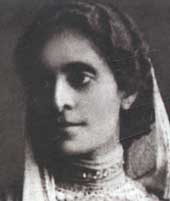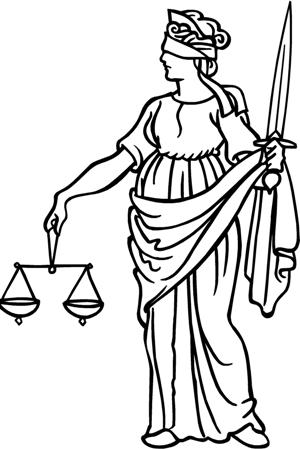The first modern legislation to govern the conduct of legal practitioners was the Legal Practitioners Act, 1879. The preamble of the Act states that the objective of the Act is to “consolidate and amend the law relating to Legal Practitioners”.
The Advocates, Vakils or Attorney of a High Court, Pleader, Mukhtar or Revenue agents were all brought under the jurisdiction and on the rolls of the High Court. The High Court was empowered to make rules regarding their qualifications, fees, suspension and dismissal.
Under this Act, a major issue was admission of women to various provincial courts as pleaders.

Admission of women to the profession under Legal Practitioners Act, 1897
In Regina Guha (1916) 21 CWN 74 the Calcutta High Court, and in Sudhangshu Bala Hazara (1922) ILR 1 Patna 104, the Patna High Court held that women otherwise qualified were not entitled to be enrolled as Vakil or Pleader. To remove the doubts Legal Practitioners (Women) Act, 1923 declared that notwithstanding the Letters Patent of any High Court no woman shall be disqualified to be enrolled as legal practitioners. The Allahabad High Court took the lead by enrolling Miss, Cornelia Sorabji as the first Indian lady Vakil of Allahabad High Court on August 24, 1921 by a decision of the English Committee of the Court (as the Administrative Committee was then called), consisting of Chief Justice Sir Grim Wood Meers.
The First Indian Bar Committee
Munshi Iswar Saran, an eminent lawyer from Allahabad, moved a resolution in the Legislative Assembly in February 1921 recommending legislation with a view to create an Indian Bar and so as to remove all distinctions enforced by statute or by practice between Barristers and Vakils. The Govt. of India in 1923 appointed the Indian Bar Committee under the Chairmanship of Sir Edwar Chamier, a retired Chief Justice of the Patna High Court. The Committee submitted its report in 1924, which was regarded as a land-mark in the annals of the Indian Bar. This reports great achievement was in its emphasis on the creation of an autonomous Indian Bar.
Some of the prominent recommendations made by the Committee Includes:
Unification and removing difference between lawyers:
At that time different grades of legal practitioners existed in each province. The Committee recommended that the difference should be done away with over time. However, it was difficult at that time to achieve this because there was a wide variety of provincial system and the local conditions, and legislation for the subordinate grades of practitioners had to be taken up on a provincial basis. Therefore, Committee approved the perpetuation of the dual system, and did not ask for any change. However, the committee provided some suggestions for reduction of distinctions between Vakils and Advocates.
On the question of organizing the legal profession on an all India basis, the Committee came to the conclusion that it did not consider it practicable at the time to organize the Bar on an all India basis. However, it recommended for constitution of Bar Council for each High Courts.
It was recommended that the Bar Council should have powers relating to making rules subject to approval of the High Court concerning, (a) qualification (b) admission, (c) certificates of proper person to be advocates in High Courts. Also, to be brought under the jurisdiction of the High Court were making and administration of the Rules relating to legal education, Rules dealing with discipline and professional conducts of Advocates and Rules on terms of appearance in any other High Court. The disciplinary powers of the Bar Council should only extended to advocates practising in the High Court
The existing disciplinary jurisdiction of the High Court was maintained. However, the High Court was required before taking disciplinary action against an advocate to refer the case to Bar Council for inquiry and report..
Indian Bar Committee, 1951
The next major step in transformation of the Indian legal practitioners was taken in 1951, when the Government of India constituted a Committee under the Chairmanship of Justice S.R. Das of the Supreme Court to examine and report on the professional governance of lawyers in the country.
The mandate of the Committee was to look into:
- The desirability and feasibility of a completely unified Bar for the whole of India
- The continuance or abolition of the dual system of counsel and solicitor (or agent) which obtains in the Supreme Court and in the High Courts at Bombay and Calcutta
- The continuance or abolition of different classes of legal practitioners, like Advocates of the Supreme Court, Advocates of the various High Courts, District Court Pleaders, Mukhtars (entitled to practise in criminal courts only), revenue agents, income-tax practitioners, etc.
- The desirability or feasibility of establishing a single Bar Council for the whole of India, or for each State, the establishment of a separate Bar Council for the Supreme Court, consolidation and revision of the various enactments (Central as well as State) relating to legal practitioners, and all other connected matters.
Major recommendations:
The Committee found that it is desirable and expedient as well as possible to create an unified National Bar. It was suggested that the uniform minimum qualification for admission to the roll of Advocates should be a law degree obtained after at least a two years’ study of Law in the University after having first graduated in Arts, Science or Commerce and a further apprentice course of study for one year in practical subjects. The Committee also stated that the establishment of an All-India Bar Council is desirable, necessary and is quite feasible. A State Bar Council for each of the states was also envisaged. The question of creating a separate Bar Council for the Supreme Court did not find favour with the Committee.
Unification:
Lawyers of various types were recognized to enjoy the same status as lawyers. The All-India Bar Council was required to compile a common roll of Advocates in order of seniority. It was recommended that subject to the rules regulating the mode and manner of practice, each Advocate in the Common Roll of Advocates should have the right to practise, in all Courts in India, from the Supreme Court down to the lowest Court or Revenue Offices. The Committee stated that no case was been made out for the abolition of the dual system in Calcutta or Bombay and there was no reason why that system should not continue in those two places, but the dual system in the Supreme Court was abolished. Also, according to the recommendations of the Committee, non-graduate Pleaders, Mukhtars or Revenue Agents were not admitted henceforth.
Draft of Legal Practitioners Act, 2010
The Ministry of Law and Justice, Government of India has unveiled in 2010 the draft “Legal Practitioners (Regulations and Maintenance of Standards in Professions, Protecting the Interest of Clients and Promoting the Rule of Law) Act, 2010” inviting suggestions from public. The draft bill aims to provide for multifarious objectives i.e. “the establishment of the Legal Services Board and in respect of its functions; to make provision for, and in connection with, the regulation of persons who carry out the activities of legal practitioners; to make provisions for the establishment of an ombudsman for complaints against the professionals and for a scheme to consider and determine complaints against the legal practitioners; to make provision in respect of providing legal services free of charge and for connected purposes”.
The draft law extends beyond the regulation of practising advocates alone in as much as the term ‘legal practitioners’ has been defined in a wide and comprehensive manner to include those not appearing before courts as well. It provides that for the purpose of the Act “Legal Professionals means the Advocates as defined in the Advocates Act, 1961 and includes the qualified lawyers engaged in legal practice confined to their chamber, engaged in drafting and conveyancing, practitioner of income tax and sale tax and those appearing before the relevant authorities, giving advice to the clients for a fee, gain or reward in the areas of customs, immigrations, trademark and patent services and all other professional services where legal issues are involved”.
Further, the draft law also provides for the professional principles which it obliges the legal professional to follow, which are as under;
- that the Legal Professionals should act with independence and integrity;
- that the Legal Professionals should maintain proper standards of work;
- that the Legal Professionals should act in the best interest of their clients;
- that the Legal Professionals who are authorise to appear before a court or tribunal, by virtue of being such authorisation should comply with their duty to the court / tribunal to act with independence in the interest of justice;
- that the affairs of clients should be kept confidential.
Conclusion:
The Indian Bar which has been unified post independence has succeeded in establishing itself as an important and respectable stakeholder of the society. While there is much to be desired yet in terms of professional governance, much development is taking shape at present, with the advent of the 2010 Draft of Legal Practitioners Act promoted by the Law and Justice Ministry, as well as the Draft Code of Ethics by the Bar Council of India. Also, notably, in order to regulate the quality of legal practitioners, an All India Bar Exam was introduced in India by BCI starting from 2010.
 Serato DJ Crack 2025Serato DJ PRO Crack
Serato DJ Crack 2025Serato DJ PRO Crack










 Allow notifications
Allow notifications




[…] historical development of law relating to legal profession and Bar in India, available at: https://blog.ipleaders.in/historical-development-of-law-relating-to-legal-profession-and-the-bar-in-… visited on December 12, […]
would u like tell me ,no. of female advocates registered in bar council of up 1923 to 2012.
there were 99999999999999999999999female advocates
the legal practitioners act was 1879 or 1897, correct your article and enlight us about the correct year.
it was 1879 not 1897……